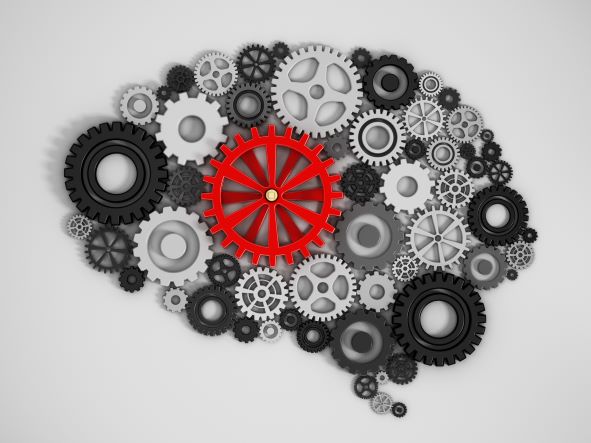What Is a Servomechanism?
If we were to compare computers to brains, then servomechanisms would be the muscles that do all the grunt work. Servomechanisms, sometimes shortened to servo, are an automatic device that correct the action of certain mechanisms by using error-sensors. When a servomechanism receives negative feedback, they’re able to course-correct the action.

Let’s dive deeper into what servomechanisms are and where they’re used so you can gain a better understanding of this fascinating side of robotics.
The Basics of Servomechanisms
A servomechanism is a physical device that responds to an input control-signal by forcing an output actuator to perform a desired function. Servomechanisms are often the connection between computers, electronics, and mechanical actions. The name literally means “serving machine.” Servomechanisms use electronic, hydraulic, or mechanical devices to control the power of an object. Servomechanisms enable a control operator to perform dangerous tasks at a distance and they are often employed to control large objects using fingertip control. Servomechanisms have the ability to sense errors within a mechanism. Due to this ability, they receive negative feedback when something is wrong, giving them the opportunity to correct the performance of a machine.
Servomechanisms are classified into two groups: open-loop and closed-loop.
-
Open Loop Servomechanisms
Open-loop is the simplest version of a servomechanism as they don’t feed back the results of their output to their input. The servos don’t register when input instructions have been completed or not, and they don’t automatically course correct if an error occurs. An example of an open-loop servomechanism is a simple motor used to rotate a television-antenna. There’s no automation to verify that the desired action has been accomplished, yet the action will still take place. The operation is purely time-based, meaning a technician can manually input presets that the mechanism can act upon in order to complete a task, but the machine itself will not adjust or override the presets if the clothes are cleaned faster than usual. Regardless of the cleanliness or dirtiness of the clothes, the machine will complete the cycle as it was asked to.
2.Closed Loop Servomechanisms
Closed loop servomechanisms are a bit different. They’re an incredibly intelligent mechanism that are able to course correct, send feedback to the input and change the output to the desired value. The output results are sampled continuously and the information is continuously compared with the input instructions. Any interruption is recorded as an error that must be corrected. Closed loop servo systems automatically cancel or correct these disagreements. An example of a closed loop servomechanism would be a thermostat. Thermostats are intelligent designs that sense the temperature of a specific space and adjust accordingly to maintain the desired heat level. While, as with a washing machine, you can manually input settings, a thermostat will automatically adjust itself when it senses something is off.
What’s the Purpose of Servomechanisms?
Servo control systems are very efficient and easy to design. On top of that, they reduce errors and improve the functionality of different mechanisms. As seen in the examples above, they’re used in everyday household objects, but they’re also instrumental when it comes to automation and robotics, particularly in manufacturing and on the factory floor. With servomechanisms, accurate control of motion can be achieved and errors can be caught without the need for extreme human supervision. They cancel out human error and allow for jobs to be handled with better attention to detail and speed. Accuracy can still be maintained even with variations concerning the mechanical load of certain machines, changes in the environment, power supply fluctuations, and even with the aging of machines.
Another massive advantage to servomechanisms is that outputs can be controlled from remotely located inputs, without the use of mechanical linkage. This means an operator doesn’t have to be near the mechanism in order to control it. The downside to servos is that they’re more complex and they can have high costs. While they span across multiple industries, their maintenance can be difficult and fine tuning is required. Robotics technicians skilled in servomechanisms are highly sought after due to their complexities.
Where Are Servomechanisms Used?
We mentioned where servomechanisms appear today, specifically within the home and in factories, but where else are they used? Servomechanisms were first used in gunlaying, fire-control and marine-navigation equipment. Today, applications of servomechanisms include their use in automatic machine tools, satellite-tracking antennas, celestial-tracking systems on telescopes, automatic navigation systems, and aircraft-gun control systems. Within manufacturing, servomechanisms can be found in assembly lines as they’re able to perform repetitive tasks that require precise movements. These servo robots can sense errors and course-correct depending on the task at hand, resulting in more streamlined labour.
Another modern example of a servomechanism would be power-steering in cars. Automotive power-steering uses hydraulic fluid under great pressure to power an actuator that redirects the wheels of a car as needed. The driver gently turns the steering wheel and the power-assist servomechanism provides much of the necessary energy needed to position the wheels. Finally, the Boeing 777 is the first heavy jet plane engineered to fly with all major flight-control functions managed by servomechanisms. In normal flight a digital signal communicates the pilot’s instructions electrically to control servomechanisms that position the plane’s control surfaces as needed. Autofocus cameras also use servomechanisms to accurately move the aperture and lens so that the photographer doesn’t have to manually adjust the settings—this can be helpful, especially for outdoor photography.
Servomechanisms in Future Trades
Servomechanisms are an automatic device that uses error-sensing negative feedback to correct the action of a mechanism. Because automation has increased exponentially in our world and new developments are constantly being made, the use of servo systems will increase. This also means the demand for individuals with in-depth knowledge of these systems will increase.
If you’re interested in servo technologies systems and how they apply to robotics, then consider applying for our Robotics Technician Training Program.
